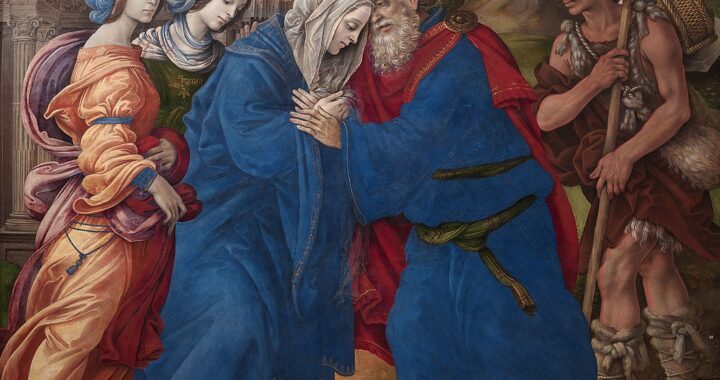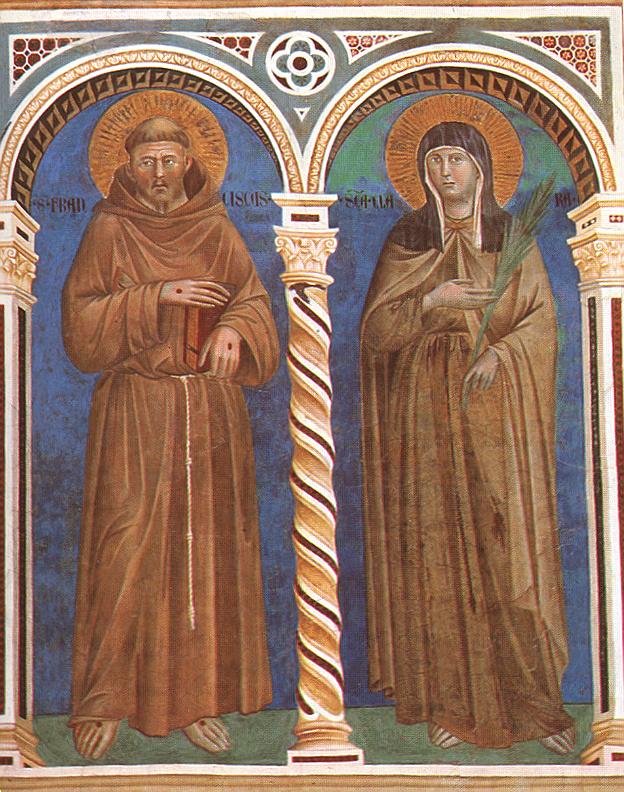
Giotto di Bondone
All images are from Wikimedia Commons
When the future Saint Francis was thirty-one years old, he returned to his native town of Assisi. It was Lent of the year 1212, and he had been invited to preach in the church. While many Church leaders frowned at Francis’ life of holy poverty, the pope had publicly given his approval to Francis just a few years before.
Francis surely hoped that many of his listeners in Assisi would be moved by his words and repent of their sins. He probably also hoped that God would move the hearts of a few men to join his fledgling order. He could not have known that his words would strike deep into the heart of a wealthy eighteen-year-old girl named Clare.
People all over Italy had heard about Il Poverello. They knew that this “poor little man” from Assisi had turned his back on a comfortable life as a merchant’s son and chose to wear a rough tunic and beg for his food. Freed from the dangers of wealth and power, Francis preached the Good News to all who would listen. Many people came to hear Francis’ Lenten sermons merely out of curiosity, but young Clare was fascinated. She was also deeply affected by Francis’ preaching and wondered if God was calling her to live a life of poverty too.
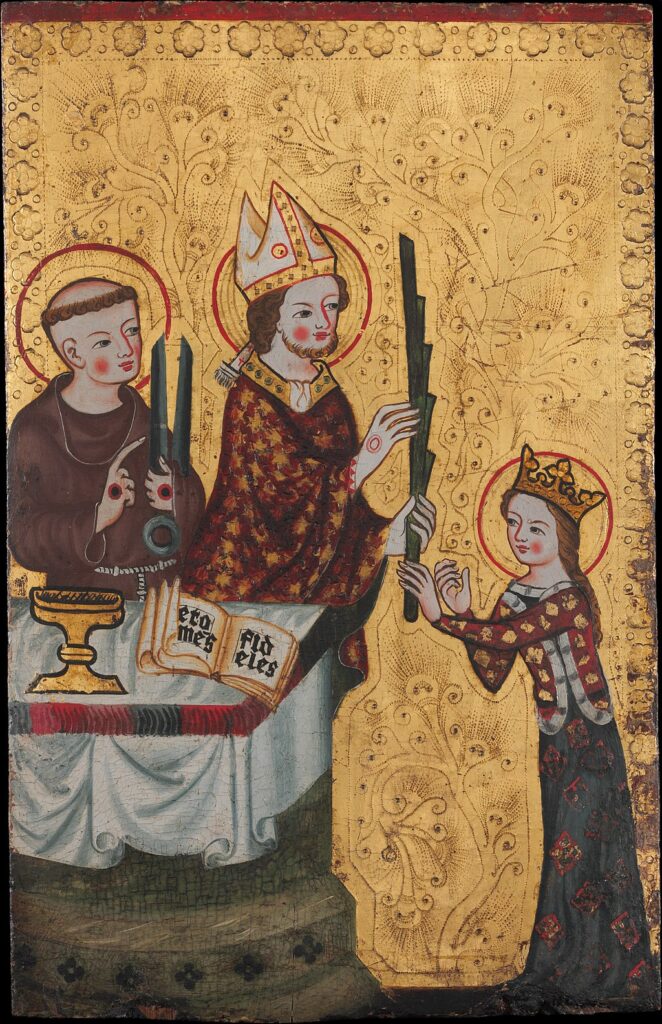
On the following Palm Sunday, she did not come forward to receive a palm from her bishop with the rest of the crowd at Mass. The bishop, thinking she was being shy, personally brought a palm to her. Clare saw that palm as a sign—a sign that she too should embrace the martyrdom of poverty.
Certain that her family would try to talk her out of her decision, Clare snuck away in the middle of the night to meet Francis and his friars. She explained to Francis that she wanted to follow the Rule of life of the Friars Minor. Convinced that God had called the young woman, Francis accepted her as the first female member of his new order. He cut off her hair, an action which symbolized her renunciation of the world and of marriage for the sake of her heavenly Bridegroom. Then Francis sent Clare to a convent of Benedictine nuns so she could learn from them about how to live as a nun.
When Clare’s family found out about her decision, they descended on the convent, certain that she had made a terrible mistake. They threatened, cajoled, and even tried to bribe her. But Clare was unmoved by their arguments. At one point, family members tried to physically drag her out of the convent and bring her home. When her veil fell off and they discovered that she had cut off all her hair, they realized she was serious. Finally they left her alone.
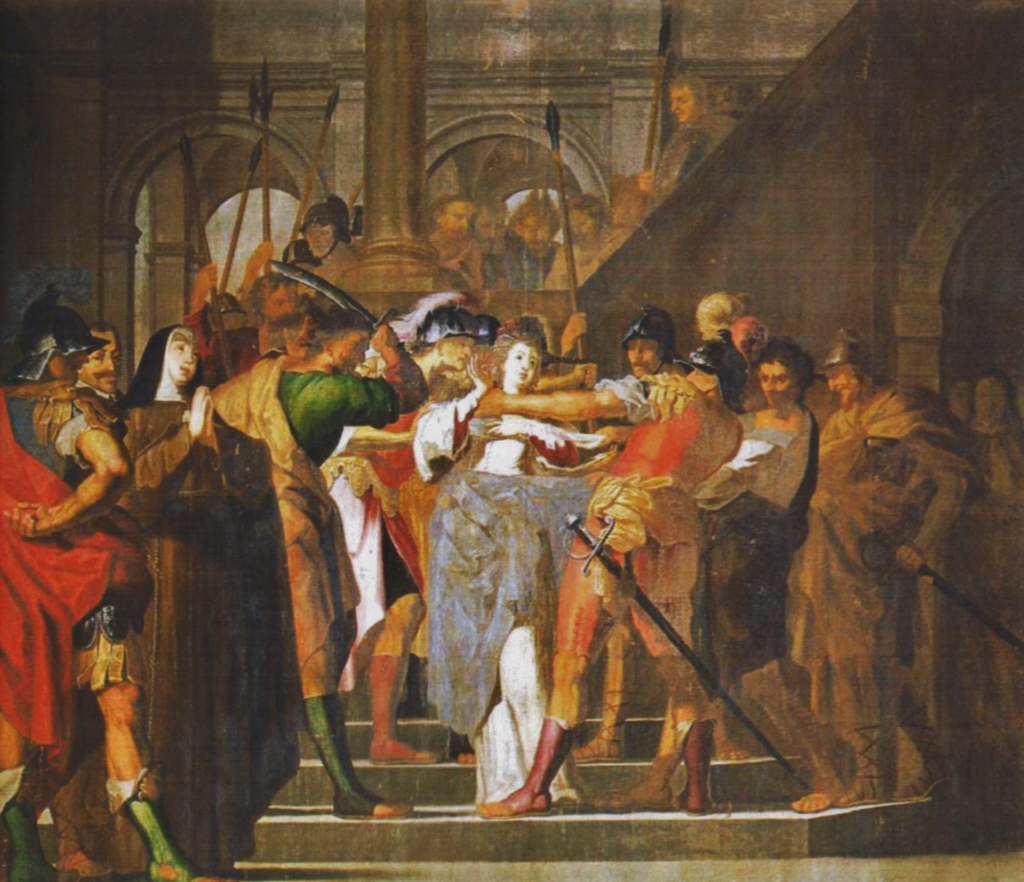
Soon afterwards, Clare’s sister Agnes was convinced God was calling her to the same radical self-sacrifice. This time, an irate uncle brought armed men with him to try to force Agnes to leave. But, according to tradition, Agnes became so heavy that grown men could not move her.
Eventually, Clare’s sister, mother, and many other wealthy women decided to become Franciscan nuns and placed themselves under Clare’s direction.

Clare lived as a Franciscan nun for thirty-seven years, and she was a wise abbess to her many spiritual daughters. In addition to helping her nuns seek holiness, she was also concerned about physical threats to their health and safety. For example, at one point Holy Roman Emperor Frederick II—who was an emperor but was certainly not a holy man—sent soldiers to terrorize the Italian countryside during his conflict with the pope. As the emperor’s Muslim soldiers encircled the city of Assisi, Clare’s convent also faced attack. Clare was seriously ill and in bed at the time, but she continued to pray for the protection of her sisters. She asked her chaplain to place the Eucharist in a monstrance and raise It out of the window, toward the attackers. Skeptics may scoff at the idea that Muslims would be affected by the sight of the Blessed Sacrament or that they would would run away from an expensive gold object rather than run to grab it. But Clare was more concerned about her sisters being assaulted and murdered than about robbery. She begged the Lord to protect them, and her prayers were heard. After all, no one debates that she and her nuns inexplicably survived this and other violent assaults on Assisi.
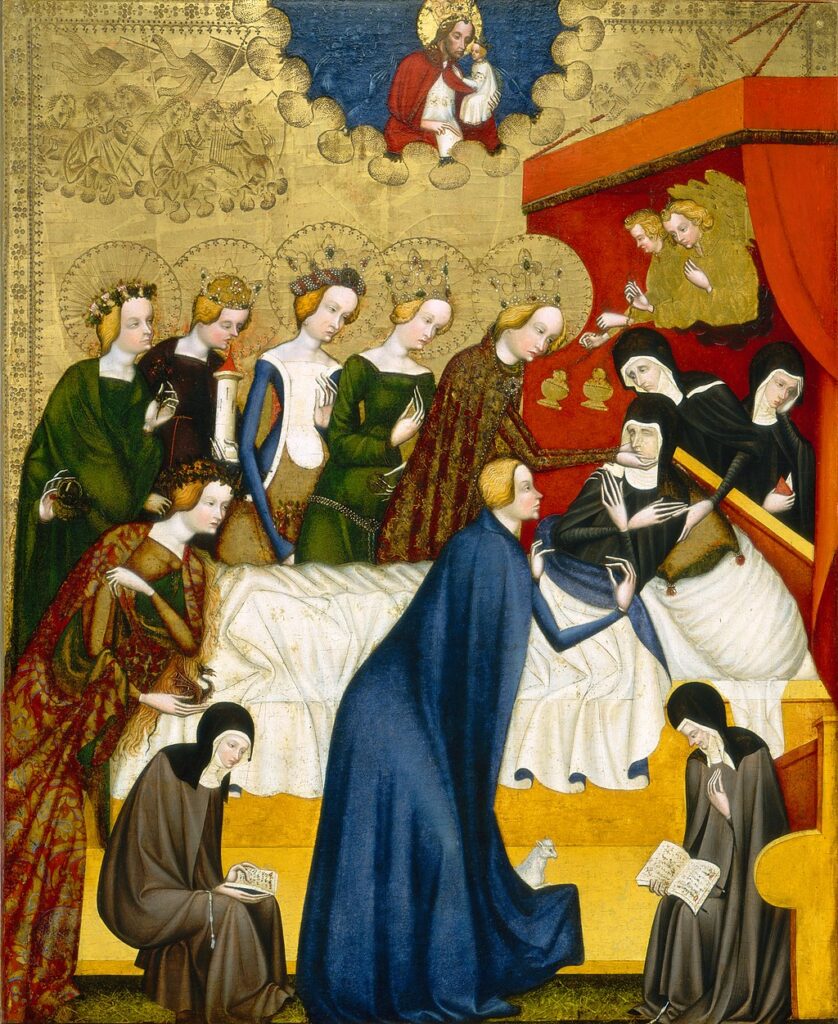
In this painting, Clare is surrounded by her nuns but also by angels and female saints, who wait to welcome her into Heaven.
During her entire life as a nun, Clare fought with popes about the Rule of life practiced by her order, which was originally called the Order of Poor Ladies. Church leaders repeatedly told Clare that it was impossible for nuns to live the radical vow of poverty, penance, and mortification that she had described in the Rule of life she composed. But she believed that God would make the impossible possible for her nuns, if only they would trust in Him. After decades of negotiating with Church leaders, Clare’s Rule was approved by the Church only a year before her death. Her followers have been known as Poor Clares in her honor ever since.
